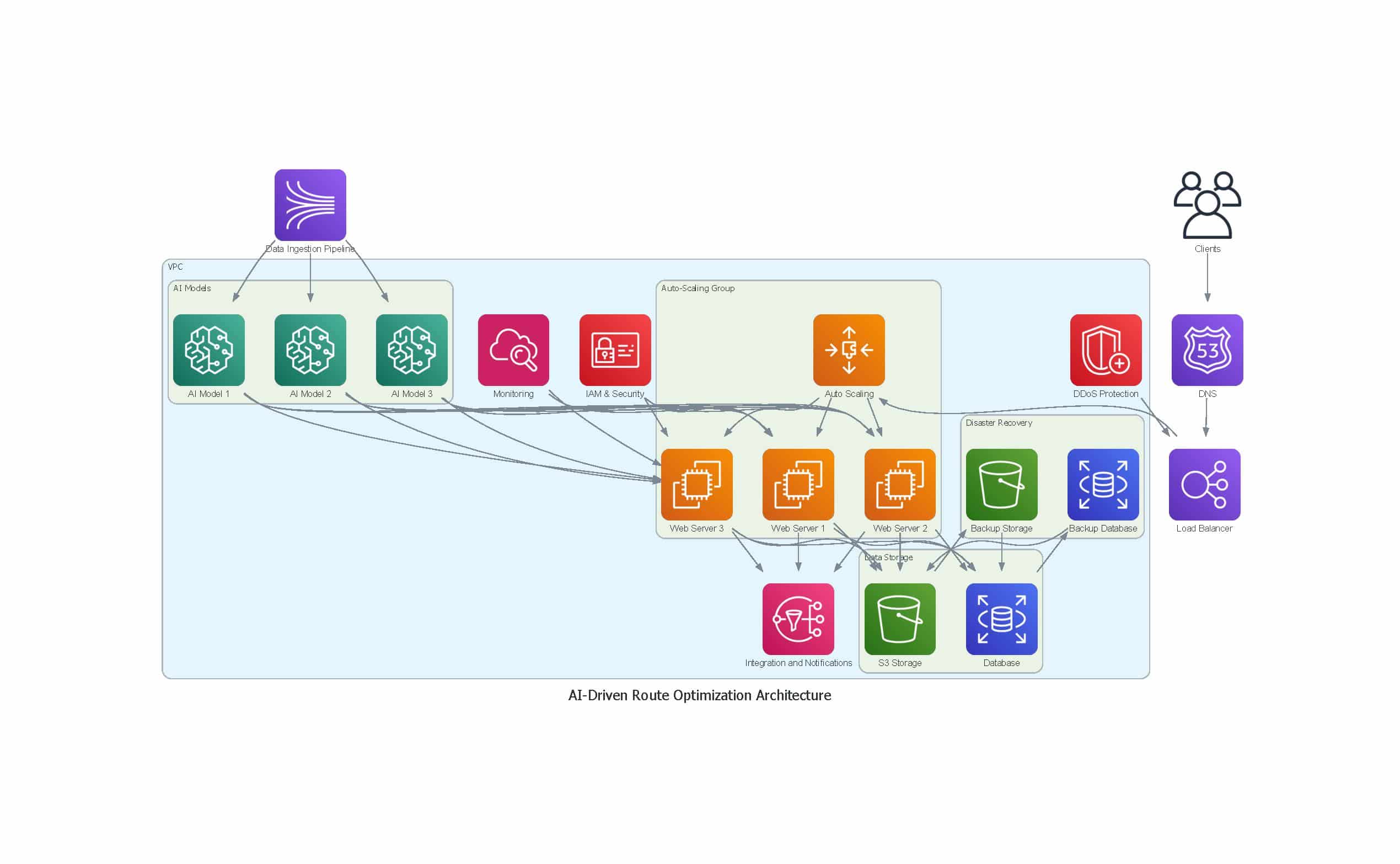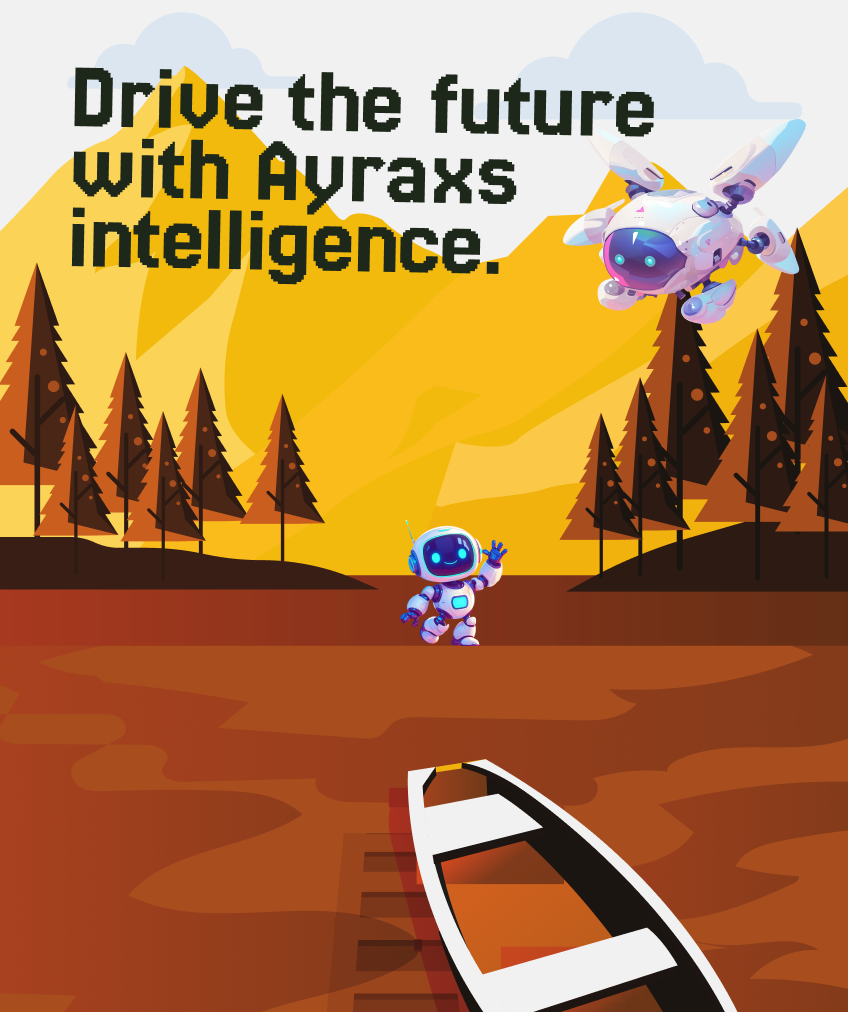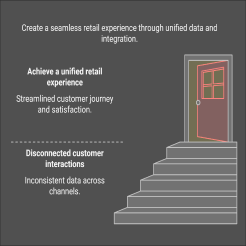
Optimizing delivery routes is crucial for reducing fuel costs and minimizing environmental impact. AI-driven route optimization leverages advanced algorithms to find the most efficient paths, taking into account factors like traffic, weather, and delivery windows. This guide explores techniques for using AI to optimize delivery routes, provides a high-level system architecture, outlines a cloud deployment plan, and presents case studies demonstrating reduced downtime and cost savings.
Techniques for Using AI to Optimize Delivery Routes, Cut Fuel Costs, and Minimize Environmental Impact
Overview of AI-Driven Route Optimization
AI-driven route optimization uses machine learning algorithms to analyze vast amounts of data and identify the most efficient delivery routes. By considering real-time traffic conditions, historical data, and various constraints, AI can significantly improve delivery efficiency, reduce fuel consumption, and lower emissions.
Benefits of AI-Driven Route Optimization
- Fuel Cost Reduction: Efficient routes reduce fuel consumption, leading to cost savings.
- Reduced Emissions: Optimized routes minimize idle times and travel distances, reducing carbon footprint.
- Improved Delivery Times: AI algorithms account for traffic and weather conditions, ensuring timely deliveries.
- Increased Efficiency: Automated route planning reduces manual effort and errors.
- Scalability: AI-driven systems can handle large volumes of delivery data, making them suitable for enterprises of all sizes.
Techniques for Route Optimization
- Data Collection and Integration:
- Real-Time Data: Integrate data from GPS, traffic APIs, and weather services.
- Historical Data: Use historical delivery data to identify patterns and trends.
- Dynamic Constraints: Consider constraints like delivery windows, vehicle capacities, and driver schedules.
- Machine Learning Algorithms:
- Predictive Analytics: Use predictive models to forecast traffic conditions and delivery times.
- Optimization Algorithms: Implement algorithms like Genetic Algorithms, Ant Colony Optimization, and Dijkstra’s Algorithm to find the most efficient routes.
- Simulation and Testing:
- Simulations: Run simulations to test different routing scenarios and evaluate their impact on fuel consumption and delivery times.
- A/B Testing: Implement A/B testing to compare the performance of AI-optimized routes against traditional routing methods.
- Continuous Learning:
- Feedback Loops: Use feedback from drivers and delivery outcomes to continuously improve the AI models.
- Adaptive Learning: Ensure the system adapts to changing conditions and improves over time.
High-Level System Architecture
Components of an AI-Driven Route Optimization System
- Data Ingestion Layer:
- Sources: Collect data from GPS devices, traffic APIs, weather services, and ERP systems.
- Ingestion Tools: Apache Kafka, AWS Kinesis, Google Cloud Pub/Sub for real-time data ingestion.
- Data Storage Layer:
- Data Warehouse: Amazon Redshift, Google BigQuery, Azure Synapse Analytics for storing historical and real-time data.
- Data Lake: Use a data lake (e.g., Amazon S3, Google Cloud Storage) for raw data storage.
- Data Processing Layer:
- ETL Tools: Apache Spark, AWS Glue, Google Dataflow for data transformation and integration.
- AI Models: TensorFlow, PyTorch for developing and deploying machine learning models.
- Data Retrieval Layer:
- Query Engines: Presto, Amazon Athena, Google BigQuery for efficient data retrieval.
- Caching Mechanisms: Redis, Memcached for optimized data access.
- Integration Layer:
- APIs: RESTful or GraphQL APIs for integrating with ERP systems, fleet management software, and driver apps.
- Middleware: Node.js, Express for handling integration logic.
- Monitoring and Logging:
- Monitoring Tools: Prometheus, Grafana for real-time performance monitoring.
- Logging: ELK Stack (Elasticsearch, Logstash, Kibana), AWS CloudWatch for centralized logging.
- Security Layer:
- Access Control: Define IAM roles and policies for secure access.
- Encryption: Use TLS/SSL for data in transit and AES for data at rest to ensure security.
Cloud Deployment Plan
Steps to Deploy AI-Driven Route Optimization System on Cloud
- Setup Cloud Infrastructure:
- Create Cloud Accounts: Set up accounts on AWS, Azure, or Google Cloud.
- Network Configuration: Configure Virtual Private Cloud (VPC) to isolate resources and control network traffic.
- Identity and Access Management (IAM): Define IAM roles and policies to secure access to resources.
- Develop and Containerize Applications:
- Develop Data Ingestion Pipelines: Use tools like Apache Kafka, AWS Kinesis, or Google Cloud Pub/Sub for real-time data ingestion.
- Create Docker Images: Develop Docker images for data processing components (ETL tools, AI models, APIs).
- Store Docker Images: Use Docker Hub, AWS ECR, or Google Container Registry to store Docker images.
- Deploy Containers Using Kubernetes:
- Create Kubernetes Cluster: Set up a Kubernetes cluster using AWS EKS, Azure AKS, or Google Kubernetes Engine (GKE).
- Deploy Applications: Use Kubernetes manifests (YAML files) or Helm charts to deploy Docker containers to the cluster.
- Configure Pods and Services: Define Pods, Services, and Ingress rules for application components.
- Deploy and Monitor Data Processing and AI Models:
- Deploy Data Processing Pipelines: Use Apache Spark, AWS Glue, or Google Dataflow for ETL processes.
- Deploy AI Models: Use TensorFlow Serving, AWS SageMaker, or Google AI Platform for model deployment.
- Monitor System: Use Prometheus and Grafana to monitor the performance and health of ETL processes, AI models, and data ingestion pipelines.
- Ensure Security and Scalability:
- Security: Implement fine-grained IAM roles and policies, use VPC to isolate resources, define security groups and network ACLs, encrypt data in transit and at rest, and regularly update and patch Docker images and Kubernetes nodes.
- Scalability: Configure Horizontal Pod Autoscaler to automatically scale the number of Pod replicas, and use managed database services for automatic backups and scaling.
- Monitoring and Logging:
- Setup Monitoring Tools: Deploy Prometheus and Grafana to monitor system performance and health.
- Implement Logging Solutions: Use the ELK Stack (Elasticsearch, Logstash, Kibana) or AWS CloudWatch for centralized logging and log analysis.
- Continuous Integration and Continuous Deployment (CI/CD):
- Setup CI/CD Pipelines: Use tools like Jenkins, GitLab CI/CD, or GitHub Actions to automate the deployment of data processing pipelines and AI models.
- Automate Testing and Deployment: Implement automated testing and deployment processes to ensure seamless updates and deployments.
Conclusion
Recap of Benefits
Implementing AI-driven route optimization in logistics offers significant advantages, including reduced fuel costs, minimized environmental impact, improved delivery times, increased efficiency, and scalability. This integrated approach ensures that logistics operations can run smoothly, securely, and cost-effectively.
Next Steps
To implement AI-driven route optimization in your logistics operations, consider partnering with Ayraxs Technologies. Our team of experts can provide the guidance and support needed to deploy and optimize AI models successfully.
How Ayraxs Technologies Can Support Your Journey
- Expertise: Our team has extensive experience in integrating AI solutions for logistics.
- Tailored Solutions: We offer customized solutions that align with your specific business needs and objectives.
- Comprehensive Support: From planning and development to deployment and ongoing support, we are committed to ensuring your success.
Ready to optimize your delivery routes with AI-driven solutions? Contact Ayraxs Technologies today to schedule a consultation and learn how we can help you harness the power of AI for efficient and environmentally friendly logistics operations.







